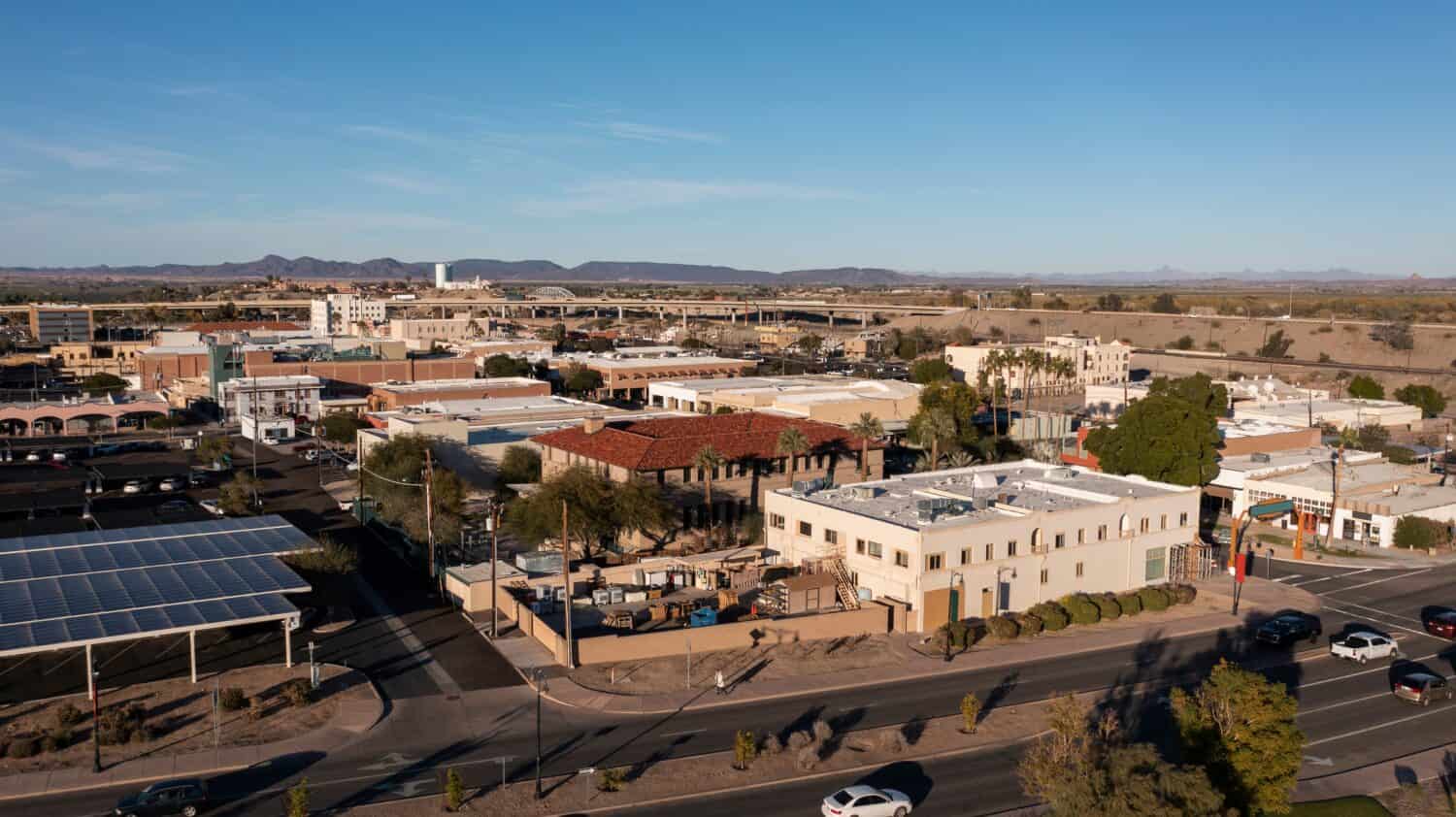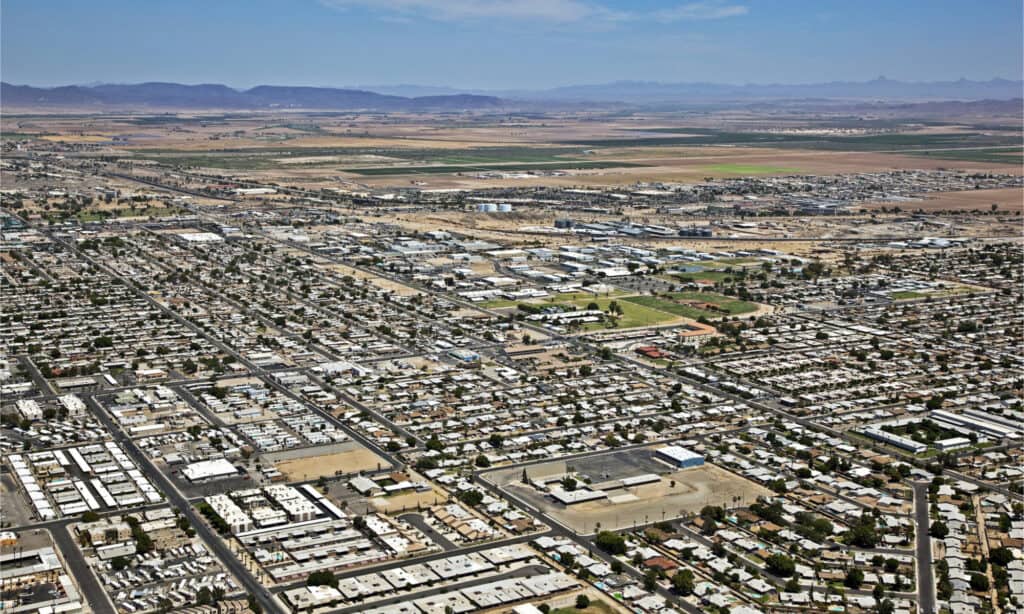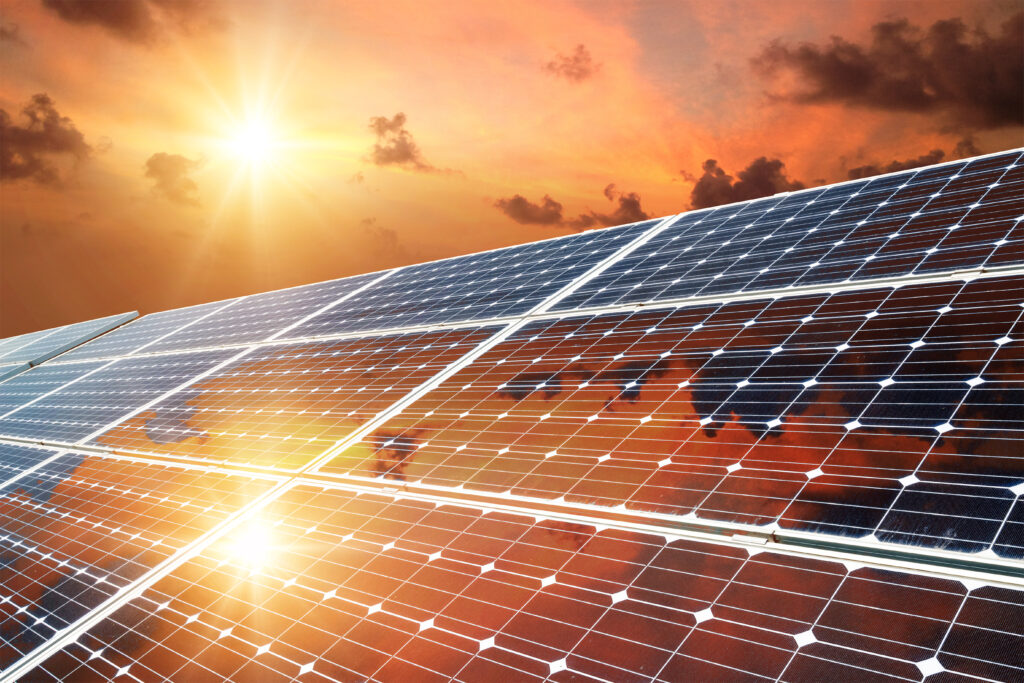Solar energy is becoming increasingly popular as a renewable energy source, and for good reason. It is clean and can be harnessed in most parts of the world. The Agua Caliente Solar Project is the largest solar farm in Arizona, where solar energy is extensively utilized. The Agua Caliente Solar Project is the largest solar farm in the state. Let’s examine the Agua Caliente Solar Project, its construction, how much energy it produces, and what human and wildlife populations live around it.
Inside Details of the Agua Caliente Solar Project

Yuma County is home to the largest solar farm in Arizona.
©Matt Gush/Shutterstock.com
The Agua Caliente Solar Project is a 290 MW solar power plant in Yuma County, Arizona. It covers over 2,400 acres and has over five million photovoltaic solar panels. The solar farm was built by First Solar and completed in 2014. Under a long-term power purchase agreement, it was developed to provide electricity to Pacific Gas and Electric Company (PG&E).
The Agua Caliente Solar Project is the largest solar farm in Arizona and one of the largest solar farms in the United States and the world. It is a testament to the growing trend towards renewable energy sources, especially solar energy. The solar farm can deliver around 700 gigawatt-hours of energy yearly. This means it can power up to 100,000 homes in Arizona. The solar panels are set up in rows and connected to inverters. They convert the DC electricity the panels produce into AC electricity that homes and businesses can use.
The Development and Construction of the Agua Caliente Solar Project
The Agua Caliente Solar Project intends to help meet Arizona’s growing electricity demand. This beautiful but dry and humid state has over 7 million people. The use of air conditioning and other appliances can strain the electric grid, especially during the hot summer months. By producing clean, renewable energy, the Agua Caliente Solar Project helps to reduce the strain on the grid and ensures that residents have access to reliable electricity.
The construction of the Agua Caliente Solar Project began in 2011 and was completed in 2014. The solar farm created jobs for 400 workers during construction and used 39,000 tons of American-made steel. Many of the workers were local residents who were able to gain valuable experience in the solar energy industry. Once the solar farm was complete, A smaller team maintained and operated the solar panels after completion. These workers also provide valuable support to the local economy.
The Impact of the Agua Caliente Solar Project on the Local Economy
The Agua Caliente Solar Project has also helped reduce the electricity cost in the area. By producing clean, renewable energy, the solar farm helps reduce the strain on the electric grid and stabilize electricity prices. This is good news for residents and businesses as it helps to keep the cost of living and doing business in the area affordable.
The Agua Caliente Solar Project has also positively impacted the environment. Producing renewable energy reduces greenhouse gas emissions from electricity production. This helps reduce air pollution in the area and minimize the harmful effects of climate change. The solar farm also helps preserve natural habitats for wildlife species that inhabit the area, such as birds and rabbits. One of the project’s main goals is to designate an Important Bird Area by Audubon Arizona to ensure its protection for future generations. The solar farm helps conserve water resources in the area as it does not require irrigation or other water uses like traditional energy sources.
The Human Population Around the Agua Caliente Solar Project

Yuma is around 35 miles south of the largest solar farm in Arizona.
©Tim Roberts Photography/Shutterstock.com
The human population around the Agua Caliente Solar Project is relatively smaller than in other parts of Arizona. Yuma County, where the solar farm is located, has a population of around 212,000. The largest city in the county is Yuma, which has a population of around 100,000 people. The city of Yuma is located about 35 miles south of the solar farm.
The region’s humid climate around the Agua Caliente Solar Project makes it an ideal location for solar energy production. Crops like lettuce, wheat, and cotton are grown around the Agua Caliente Solar Project, also known for its agricultural production.
The solar farm has helped boost the local economy, creating jobs during the construction phase and ongoing maintenance of the solar panels.
Wildlife Population Around the Agua Caliente Solar Project

Bobcats, desert tortoises, and coyotes are among the wildlife near Agua Caliente, Arizona’s largest solar farm.
©Don Mammoser/Shutterstock.com
The Agua Caliente Solar Project is in the Sonoran Desert, home to diverse species. Some of the animals in the area include the desert tortoise, coyotes, bobcats, javelina, and several species of snakes and lizards. The solar farm developers were aware of the solar panels’ potential impact on the local wildlife and took steps to minimize this.
The developers of the Aqua Caliente Solar Project designed the solar panels to elevate off the ground, allowing animals to move freely underneath the panels without any disturbance.
The developers of the Aqua Caliente Solar Project conducted a thorough environmental impact assessment before beginning construction.
During the assessment, the developers surveyed the wildlife in the area and identified areas of habitat that needed protection. The developers of the Agua Caliente Solar Project implemented several measures to minimize the impact on the local wildlife during the construction phase. These measures included using low-impact construction techniques, avoiding sensitive habitats during construction, and conducting surveys of the area before construction began.
Environmental Impact Assessment of the Agua Caliente Solar Project

Solar panels don’t have emissions or waste products, which helps minimize their impact on the environment.
©Diyana Dimitrova/Shutterstock.com
The environmental impact assessment (EIA) is integral to any large-scale development project. The EIA for the Agua Caliente Solar Project’s goal is to identify potential environmental impacts and develop strategies to minimize these impacts. The assessment included surveys of the wildlife in the area and identified areas of habitat that needs protection. The solar panels elevate off the ground, which allows animals to move freely underneath the panels without disturbance.
The EIA also considered the impact of the solar farm on the local air quality, water resources, and soil quality. Solar panels do not produce emissions or waste products, so the impact on the air quality is minimal. The solar farm uses a closed-loop system to cool the solar panels, which reduces the amount of water needed to operate the solar farm. The solar farm also does not use any chemicals or pesticides, which helps to preserve the soil quality in the area.
The Future of Solar Energy in Arizona
The Agua Caliente Solar Project is just one example of Arizona’s growing trend toward renewable energy. In addition to solar energy, wind energy is becoming increasingly popular in the state. The Red Horse II Wind Farm, located in Cochise County, is the largest in Arizona, with a capacity of 71 MW.
Using renewable energy sources like solar and wind power helps reduce our reliance on fossil fuels and positively impacts the environment. By reducing carbon emissions, renewable energy sources help to mitigate climate change and preserve the planet for future generations.
Can You Visit Agua Caliente Solar Project?

You can’t visit Agua Caliente, but you may be able to visit other solar farms in the United States.
©Roschetzky Photography/Shutterstock.com
The Agua Caliente Solar Project is a private facility not open to the public for tours or visits. This is because it is a functioning solar farm that produces electricity for the local utility company, and for safety reasons, it is not accessible to the general public.
However, you can find information online about the solar farm. Several resources are available that provide information on the development, construction, and operation of the Agua Caliente Solar Project. You can also learn about other solar farms and renewable energy projects that may be open for public tours or visits.
Several other ways exist to learn about solar and renewable energy sources. Many cities and towns offer educational programs or workshops on renewable energy and sustainability. You can also visit museums or science centers with exhibits on renewable energy sources and their environmental impact.
Where is the Agua Caliente Solar Project Located on a Map?
Located in Yuma County, Arizona, the Agua Caliente Solar Project is a massive solar power facility generating 290 MW of clean energy. Encompassing more than 2,400 acres, the plant boasts an impressive array of over five million photovoltaic solar panels.
Here is the Agua Caliente Solar Project on a map:
Conclusion
Renewable energy is the key to a more sustainable future, and projects like Agua Caliente Solar Project show how it can be done. With proper planning and consideration of local ecosystems, large-scale sustainable energy projects can benefit the environment and reduce our reliance on fossil fuels. The Agua Caliente Solar Project shows how renewable energy can generate clean electricity without negatively impacting the environment.
The photo featured at the top of this post is © Matt Gush/Shutterstock.com
Thank you for reading! Have some feedback for us? Contact the AZ Animals editorial team.






